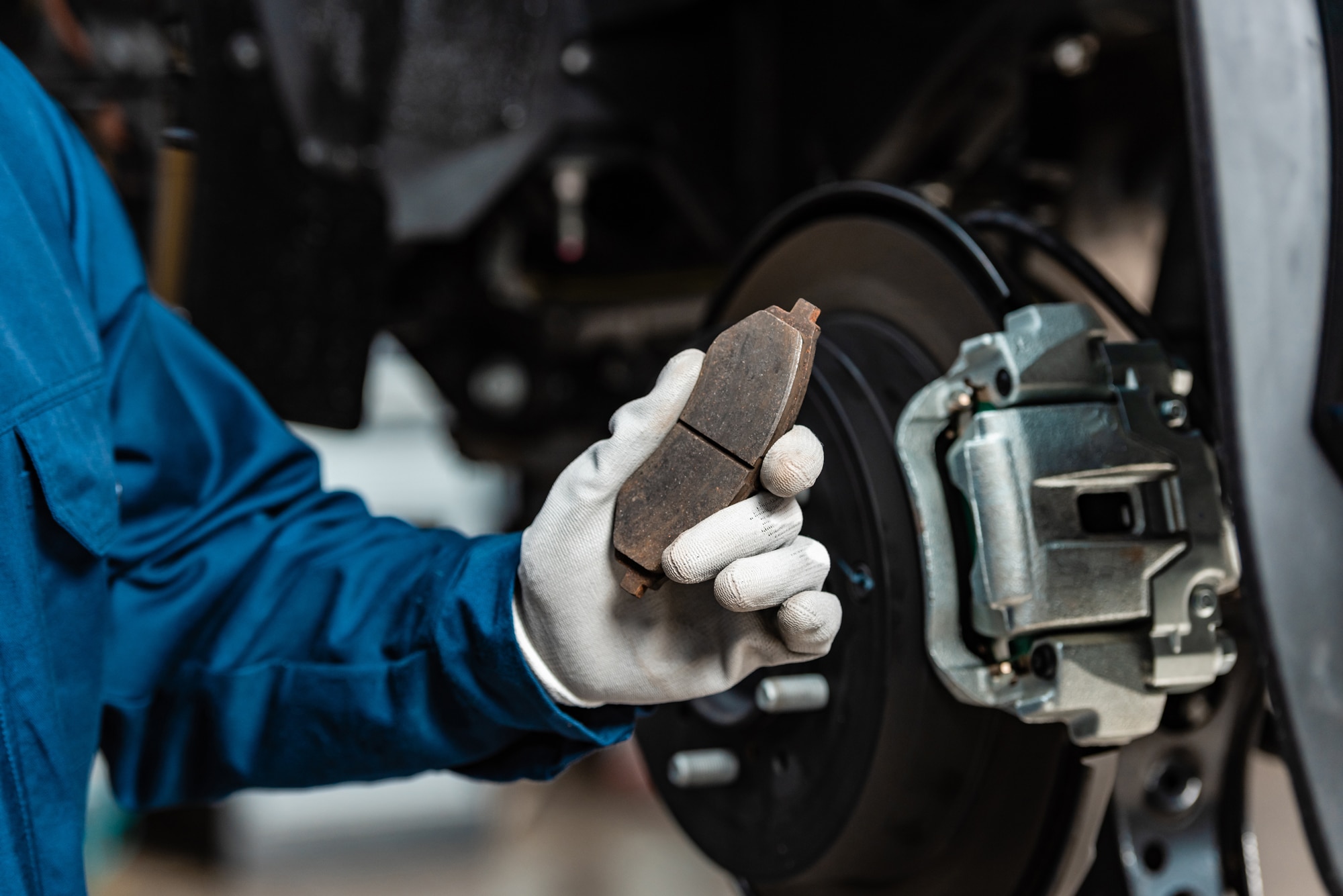Brake Pads: How Long They Last, When to Replace Them, and Which Material to Choose
Stop and think about what’s bringing your car to a halt.
 Shutterstock
Shutterstock
Modern cars use disc brakes, and those discs (aka rotors) need something to squeeze them so you can slow down. Brake pads do that job. They consist of a friction material—which rubs against the rotor—and a backing plate and are a vital part of your brake system, which itself is an essential part of your car. Here’s what you need to know about replacing them.
How Long Do Brake Pads Last?
Pad life can vary from the length of one or two track days to about 70,000 miles, with an average somewhere around 45,000 miles. Their longevity depends on many variables, including your driving style (whether you’re light or hard on the brake pedal), where you drive (flat desert versus snowy mountains, city versus highway), how you use your vehicle (commuting, towing, hauling), and the pads’ material (detailed below). Because of this, it’s good practice to check them (or have them checked) every 5000 miles and any time the wheels are off.
When to Replace Your Brake Pads
There are a variety of ways to tell if your pads are on their way out. If you hear a screeching, grinding, or metal-on-metal sound when you hit the brakes, that’s the pads screaming for mercy. The noise may come from a wear indicator, usually a tiny strip of metal embedded deep in the pad. As the friction material wears away, the indicator becomes exposed and scrapes against the disc to literally sound the alarm that the pads are shot. If the pad has no such wear indicator, or if you’ve tuned out the noise, you’re almost certain to hear it when the backing plate scrapes against the rotor. None of these sounds are good news, and none of them are subtle - but they all tell you when to replace brake pads.
If you can feel the brake pedal pulsating as you press it down, it’s an indication that the pads aren’t making proper contact with the rotors and it’s time to replace them. Don’t confuse the pulsation caused by an anti-lock braking system with that of pad wear, though; if you’re unsure what’s causing the vibrations, visually inspect the pads.
Some (but not all) cars have pad-wear sensors that measure the remaining thickness and will alert the driver when it’s time for new hardware. If your car tells you the pads are gone, they’re gone. (And you may need to replace the sensors as well.)
If your brakes are not performing as well as you remember, it could be the pads giving out, or it could be another brake system issue, such as low hydraulic fluid or air in the lines. Don’t ignore any of these signs or you could ruin perfectly good rotors—or worse, you might go for the brake pedal one day and find a lacking response.
If you need to replace any of your car’s brake pads, make sure you do so on both sides of the axle, not just one corner. It’s important to have balanced braking ability left to right to prevent the vehicle from pulling to one side when you press that pedal.
What are the Friction Material Options?
The right choice for pad materials depends on a tradeoff. Noise, longevity, and brake dust can all be tradeoffs depending on what’s more important to each owner. There are three main categories: organic, semi metallic, and ceramic.
Organic or nonmetallic brake pads—made of materials such as carbon, rubber, and fiberglass but not metal—are typically the least expensive friction material option. They tend not to last as long, but they are relatively quiet in operation.
Next up the cost and performance ladder are semi metallic pads. These have metal added to the mix for improved heat dissipation compared with non-metallics. Tradeoffs include slightly reduced cold-weather performance, more brake dust, and more noise.
Ceramic brake pads are at the top, and they demand a high price for their superiority. Often found on high-performance vehicles, ceramic pads provide maximum stopping power but need to be warmed up to work their best. They are quieter and produce less dust than semi metallic pads too.
Written by humans.
Edited by humans.
 David Gluckman
David GluckmanDavid Gluckman has over a decade of experience as a writer and editor for print and digital automotive publications. He can parallel park a school bus, has a spreadsheet listing every vehicle he’s ever tested, and once drove a Lincoln Town Car 63 mph in reverse. When David’s not searching for the perfect used car, you can find him sampling the latest gimmicky foodstuffs that America has to offer.
Related articles
View more related articles